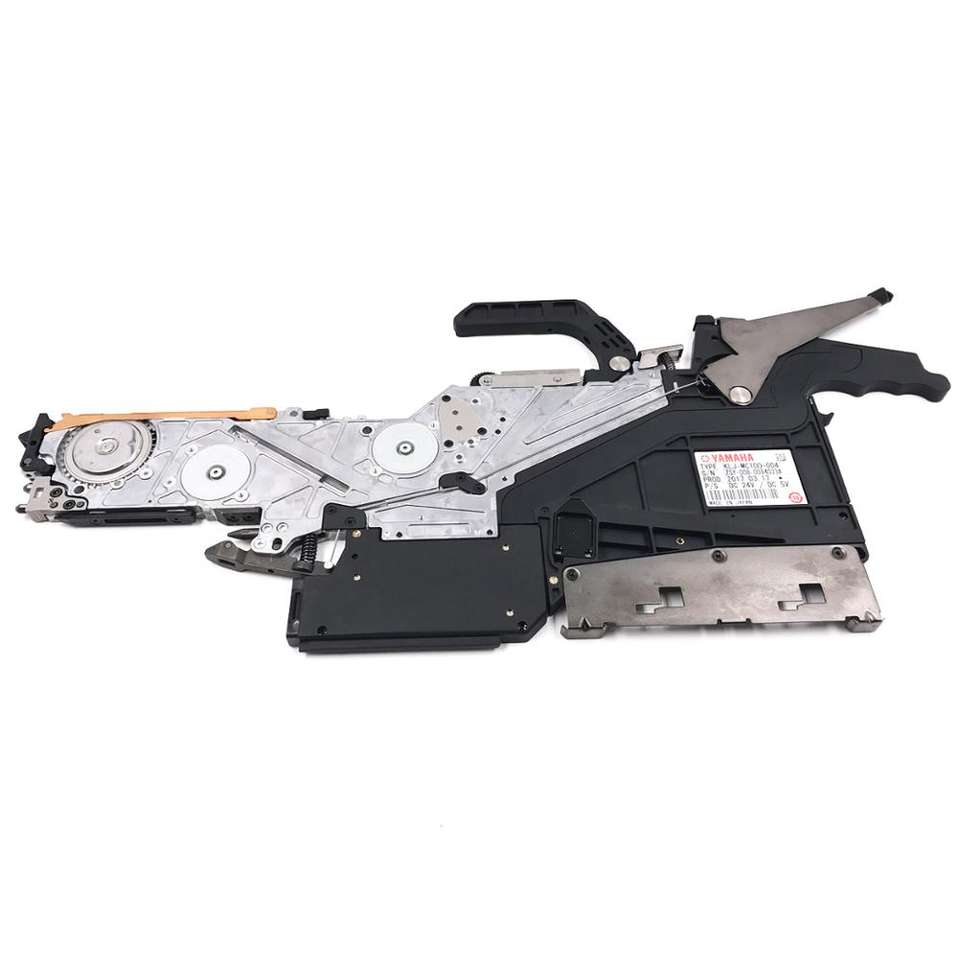
Клиент А: Мы используем питатель ZS серии Yamaha YS с магнитами под желоб.
Когда количество материала питателя составляет около 300 Кому 400, Он начинает бросать материал и подпрыгивает при его переворачивании или при подаче. Мы изменили скорость подачи, Но проблема до сих пор не решена.
ФидерСмт: Мы посчитали, что материал вызван статическим электричеством. Сегодня мы обсудим, как решить эту проблему.
Статическое электричество является распространенной проблемой в промышленном секторе, и это может вызвать целый ряд проблем, От проблем с погрузочно-разгрузочными работами до угроз безопасности. Одной из наиболее распространенных проблем, связанных со статическим электричеством, является выбрасывание материальных компонентов из электрических фидеров, такие как электрический фидер Yamaha ZS. Электрический фидер Yamaha ZS является популярным фидером, используемым в электронной промышленности. В этой статье, мы обсудим причины выбрасывания компонентов материала из электрического питателя Yamaha ZS и предложим некоторые решения для устранения статического электричества и предотвращения его выброса.
Причины выброса компонентов материала из электрического питателя Yamaha ZS:
Статическое электричество:
Наиболее распространенной причиной выброса компонентов материала из электропитателя Yamaha ZS является статическое электричество. Статическое электричество может накапливаться на поверхности компонентов материала из-за трения, И это может привести к тому, что компоненты будут прилипать к питателю или друг к другу. Когда устройство подачи пытается освободить компоненты, Статический заряд может привести к тому, что они будут выброшены из кормушки.
Несогласованные настройки фидера:
Еще одной причиной выброса компонентов материала из электрического питателя Yamaha ZS являются несогласованные настройки питателя. Если настройки фидера установлены неправильно, Компоненты могут высвобождаться слишком быстро или слишком медленно, в результате чего они выбрасываются из кормушки.
Характеристики материала:
Характеристики компонентов материала также могут способствовать проблеме метания. Если компоненты слишком маленькие или слишком легкие, Они могут не удерживаться кормушкой должным образом. Дополнительно, если компоненты имеют неправильную форму, Они могут не поместиться в кормушке должным образом, что приводит к проблемам с выбросами.
Решения для устранения статического электричества и предотвращения бросания:
Замените материал:
Если компонент, катушка или материал являются источником статического электричества, может потребоваться замена материала. Ищите материалы с антистатическими свойствами или более низким поверхностным сопротивлением, что может помочь предотвратить накопление статического электричества. Рассмотрите возможность использования таких материалов, как проводящая пена, антистатические пакеты или лотки, или проводящий поликарбонат.
Ионизация:
Еще одним решением для устранения статического электричества является ионизация. Ионизация предполагает добавление ионов в воздух, окружающий компоненты, который нейтрализует любой статический заряд. Для ионизации воздуха, Можно использовать ионизирующую воздуходувку или ионизирующий стержень.
Антистатические материалы:
Использование антистатических материалов также может помочь предотвратить накопление статического электричества. Антистатические материалы имеют более низкое поверхностное сопротивление, который позволяет разрядить любое статическое электричество. Для предотвращения бросков из электропитателя Yamaha ZS, Можно использовать антистатические лотки, чур, или покрытий на питателе.
Настройки фидера:
Правильная настройка кормушки также важна для предотвращения забрасывания. Настройки питателя должны быть отрегулированы в соответствии с характеристиками компонентов материала. Скорость подачи, Интенсивность вибрации, и угол захвата должен быть установлен правильно, чтобы предотвратить выброс.
Методы транспортировки материалов:
Методы обработки материалов также могут помочь предотвратить выброс из электрического устройства подачи Yamaha ZS. С компонентами следует обращаться бережно, причем содержать их следует в среде с низкой влажностью. Дополнительно, Компоненты следует хранить в антистатических контейнерах или пакетах для предотвращения накопления статического электричества.
Заключение:
Статическое электричество является распространенной проблемой в промышленном секторе, И это может вызвать целый ряд проблем, От проблем с погрузочно-разгрузочными работами до угроз безопасности. Для предотвращения бросков из электропитателя Yamaha ZS, Замените Материал, ионизация, антистатические материалы, Правильные настройки питателя, и могут быть использованы методы обработки материалов. Внедрение этих решений может помочь предотвратить выбросы, а также повысить эффективность и безопасность производственных процессов.














